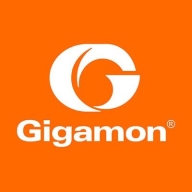

Find out in this report how the two Application Performance Monitoring (APM) and Observability solutions compare in terms of features, pricing, service and support, easy of deployment, and ROI.
Azure Monitor helps prevent impacts on their system.
Users end up getting no resolution from their team because they're outsourced vendors, and they don't have deeper expertise over any of the products they are referring to.
However, the second-line support is good.
I would rate the support for Azure Monitor as a seven.
The technical support by Gigamon Deep Observability Pipeline is good because it has a local architect in my area.
Azure Monitor is very scalable; there are no issues with scalability for different kinds of businesses.
Azure Monitor is working fine, yet I face a costing issue as if there are a lot of logs collected in the workspace or in the center, it becomes very costly.
The cost skyrockets once you start using it, and there are complaints that the actual cost of the Kubernetes cluster was less than the cost they were incurring for Azure Monitor.
If Azure Monitor can independently add one gigabyte, two gigabytes, or five gigabytes at least to log storage, I can fix the logs without syncing with Log Analytics Workspace and Sentinel.
The challenges with Azure Monitor are that it's initially complex to set up because you need multiple components.
When I export logs into the application, workspace, log analytic workspace, and into Sentinel to read reports, I need to add storage, which increases the cost.
The alerting features definitely help in reducing operational downtime for my customers by allowing us to get notifications in advance and take active actions.
The ease of access in Azure is significant because it's native to the platform and easy to integrate.
Resource monitoring is essential.
The Pipeline's Comprehensive Insights into data flows have helped improve operational efficiency and security.
| Product | Market Share (%) |
|---|---|
| Azure Monitor | 4.9% |
| Gigamon Deep Observability Pipeline | 0.4% |
| Other | 94.7% |


| Company Size | Count |
|---|---|
| Small Business | 23 |
| Midsize Enterprise | 6 |
| Large Enterprise | 29 |
| Company Size | Count |
|---|---|
| Small Business | 3 |
| Midsize Enterprise | 1 |
| Large Enterprise | 5 |
Azure Monitor is a comprehensive monitoring solution offered by Microsoft Azure. It provides a centralized platform for monitoring the performance and health of various Azure resources, applications, and infrastructure.
With Azure Monitor, users can gain insights into the availability, performance, and usage of their applications and infrastructure. The key features of Azure Monitor include metrics, logs, alerts, and dashboards. Metrics allow users to collect and analyze performance data from various Azure resources, such as virtual machines, databases, and storage accounts.
Logs enable users to collect and analyze log data from different sources, including Azure resources, applications, and operating systems. Azure Monitor also provides a robust alerting mechanism that allows users to set up alerts based on specific conditions or thresholds. These alerts can be configured to notify users via email, SMS, or other notification channels. Additionally, Azure Monitor offers customizable dashboards that allow users to visualize and analyze their monitoring data in a personalized and intuitive manner.
Azure Monitor integrates seamlessly with other Azure services, such as Azure Automation and Azure Logic Apps, enabling users to automate actions based on monitoring data. It also supports integration with third-party monitoring tools and services, providing flexibility and extensibility.
Overall, Azure Monitor is a powerful and versatile monitoring solution that helps users gain deep insights into the performance and health of their Azure resources and applications. It offers a wide range of features and integrations, making it a comprehensive solution for monitoring and managing Azure environments.
Gigamon Deep Observability Pipeline is a comprehensive network visibility solution that provides real-time insights into network traffic. It offers SSL inspection and mobile network monitoring for traffic monitoring purposes. The solution optimizes networks, aids in security inspection, and improves firewall performance. It is praised for its performance, power, straightforward integration, stability, and ease of initial setup.
With Gigamon, organizations can gain complete visibility into their network traffic, identify potential threats, and take proactive measures to prevent them. The solution is ideal for organizations of all sizes, including enterprises, service providers, and government agencies.
We monitor all Application Performance Monitoring (APM) and Observability reviews to prevent fraudulent reviews and keep review quality high. We do not post reviews by company employees or direct competitors. We validate each review for authenticity via cross-reference with LinkedIn, and personal follow-up with the reviewer when necessary.